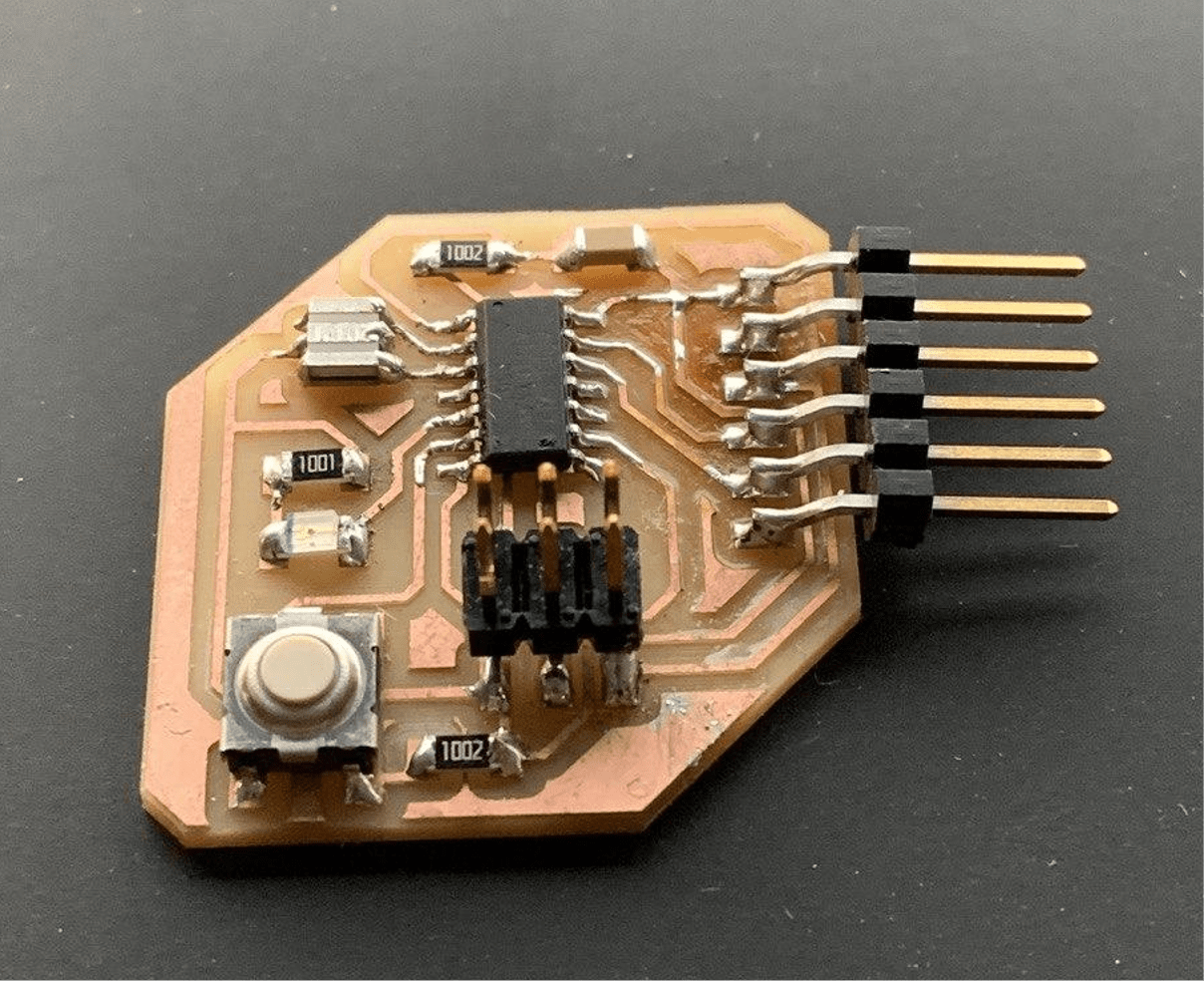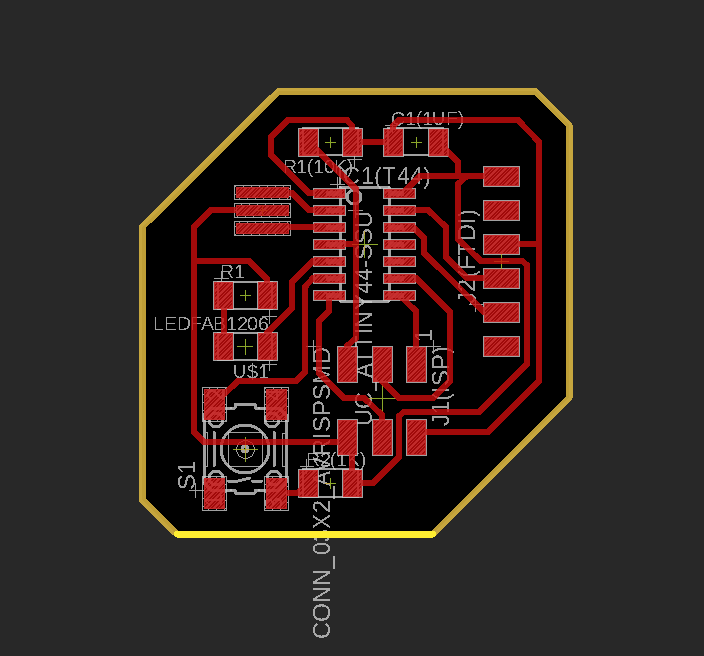Week 14
Embedded Networking and Communications
Objectives
Individual Assignment
Group Assignment
Learning Outcomes
Individual Assignment
I2C Communication
I2C only uses two wires to transmit data between devices:
- SDA (Serial Data) – The line for the master and slave to send and receive data.
- SCL (Serial Clock) – The line that carries the clock signal.

BOARDS
- Master Node - Generates the clock and initiates communication with slaves.
- Slave Node - Receives the clock and responds when addressed by the master.








PROGRAMMING
#include <Wire.h>
#include <SoftwareSerial.h>
#define trigPin 3
#define echoPin 2
#define RX 1
#define TX 0
SoftwareSerial window(RX, TX);
void setup()
{
pinMode(trigPin, OUTPUT);
pinMode(echoPin, INPUT);
window.begin(9600);
Wire.begin();
}
void loop()
{
long duration, distance;
digitalWrite(trigPin, LOW);
delayMicroseconds(2);
digitalWrite(trigPin, HIGH);
delayMicroseconds(10);
duration = pulseIn(echoPin, HIGH);
distance = (duration/2) / 29.1;
if(distance <= 10)
{
Wire.beginTransmission(8);
Wire.write(1);
Wire.endTransmission();
window.println("Human within 10cm");
}
else if(distance > 10 && distance <=30)
{
Wire.beginTransmission(8);
Wire.write(0);
Wire.endTransmission();
window.println("Human within 30cm");
}
delay(5000);
}
#include <Wire.h>
#define led1 3
void setup()
{
pinMode(led1, OUTPUT);
Wire.begin(8);
Wire.onReceive(receiveEvent);
}
void loop()
{
delay(100);
}
void receiveEvent()
{
int x = Wire.read();
if (x == 1)
{
digitalWrite(led1, HIGH);
}
else if (x == 0)
{
digitalWrite(led1, LOW);
}
}
CONNECTION


